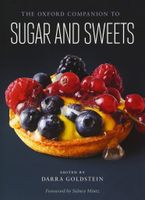Advertisement
The Soviet Period
Appears in
Published 2015
In the aftermath of the 1917 Revolution, food became an ideological tool. Candy was particularly useful, since it was now produced for the masses, often for educational purposes. “New Weight” candies introduced the metric system in a pleasing way. Wrappers for “Red Army” candies, with Russian Civil War images and catchy rhymes, were designed by the great poet Vladimir Mayakovsky. The consumption of candy, once considered nonessential, became a cultural imperative.
Chocolate, however, remained a symbol of bourgeois decadence, providing fodder for Alexander Tarasov-Rodionov’s classic early Soviet novel Chocolate (1922), which chronicles the downfall of a functionary through the twin temptations of chocolate and lust. But with Stalin’s mid-1930s campaign to make life “better” and “more cheerful,” chocolate was promoted, along with champagne, as proof that the Soviet Union could provide its proletariat with luxury goods. Nine chocolate factories were built under the Five-Year Plans, and vast amounts of cacao beans were imported for domestic production.


